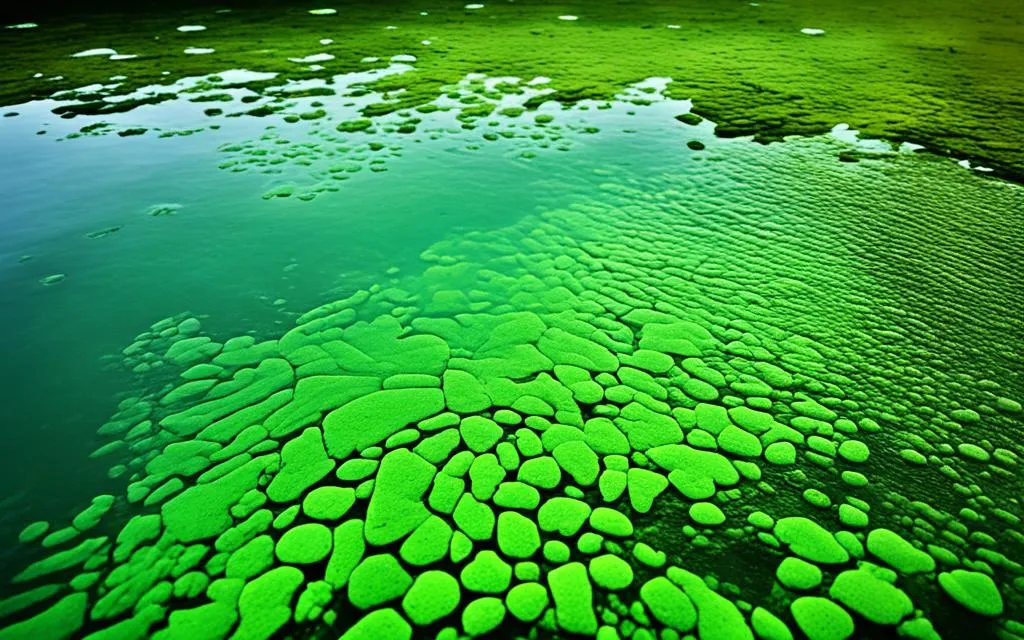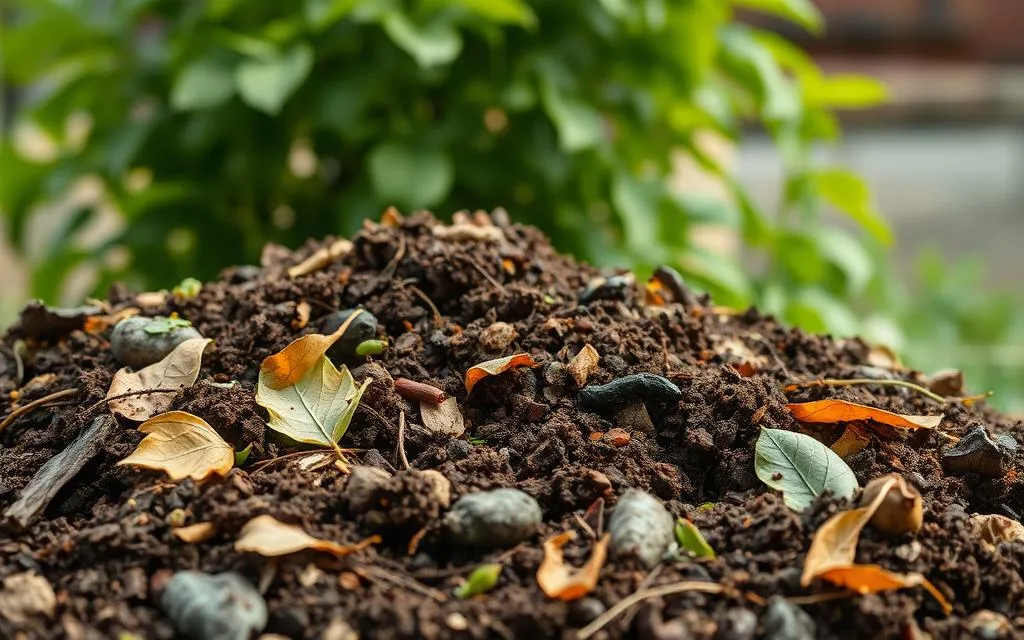We all need to face the issue of water pollution head-on. It’s harming our planet’s vital ecosystems. Water supports a wide range of life, from tiny microorganisms to big marine animals. But human actions have made our water resources less safe, causing big problems we can’t ignore.
This article will look at the eight major effects of water pollution. We’ll see how it harms aquatic life and affects the food chain. By understanding this, we can work together to protect our water and the ecosystems it supports.
Water pollution comes from many sources and has big effects. Things like industrial waste, farm runoff, sewage, and plastic pollution are all making our water dirty. As we learn more about these problems, we’ll see why fixing them is so important.
Table of Contents
ToggleUnderstanding the Gravity of Water Pollution
To understand water pollution, we need to know what it is and its sources. It’s when harmful substances contaminate water like rivers, lakes, and oceans. These pollutants come from different places, each harming our water resources in its own way.
What is Water Pollution?
Water pollution means having pollutants in water that can hurt the environment, animals, and people. These can be things like industrial chemicals, farm runoff, sewage, or oil spills. It can destroy ecosystems and make our water unsafe for drinking, bathing, or fun.
Sources of Water Pollution
The main sources of water pollution are:
- Industrial Waste: Factories and industrial places often send chemicals and heavy metals into the water. This harms the water and the animals living in it.
- Agricultural Runoff: Pesticides, fertilizers, and animal waste from farms can flow into rivers, lakes, and oceans. This causes too many nutrients and can make the water unhealthy for life.
- Sewage Discharge: Sewage from homes and businesses can get into the water. It brings pathogens and pollutants into the environment.
- Oil Spills: Oil spills from ships, pipelines, or drilling can destroy marine life and harm coastal areas.
- Improper Waste Disposal: Dumping trash illegally can let harmful chemicals get into our water sources.
Knowing where water pollution comes from helps us find ways to stop it. This way, we can protect our vital water resources.
Disruption of Aquatic Ecosystems
When water gets polluted, it can severely harm the balance of aquatic ecosystems. Pollutants destroy habitats, mess up food chains, and can lead to the loss or extinction of many aquatic species. This results in a big loss of biodiversity.
The water pollution impact on habitats is huge. Toxic substances like heavy metals and pesticides make the water deadly for many species. Pollutants that use up oxygen, like sewage and farm runoff, create aquatic ecosystem disruption. This leads to dead zones where no life can survive.
This harm to the ecosystem affects the whole food chain. When some species decline or vanish, the ecosystem’s balance is upset. This leads to more biodiversity loss in water bodies. Losing key species can hurt the entire community that depends on them to live.
| Pollutant | Impact on Aquatic Ecosystems |
|---|---|
| Heavy Metals | Build up in the food chain, causing toxicity and reproductive problems in aquatic life |
| Pesticides | Upset the balance of aquatic ecosystems, leading to the decline of sensitive species |
| Sewage and Nutrient Runoff | Use up oxygen, creating dead zones and promoting harmful algal blooms |
Fixing the aquatic ecosystem disruption from water pollution is key to saving our waterways and the diverse life they support. By understanding the big effects of water pollution, we can work to lessen its impact. This helps protect these important natural resources.
8 Effects of Water Pollution
Water pollution has big effects on the environment and all life that needs clean water. We’ll look at 8 major effects of water pollution and how they hurt our ecosystems.
Disruption of Aquatic Habitats
Water pollution can destroy the balance in aquatic ecosystems. It brings in harmful chemicals and heavy metals. This makes habitats bad for aquatic life to survive.
Decline in Biodiversity
Pollutants in water can lower the variety of life in water. Some species can’t adapt to the new conditions. This leads to fewer types of life in the area.
Eutrophication and Algal Blooms
Too many nutrients from farms or sewage can cause eutrophication. This makes algae grow too fast. Algal blooms take up too much oxygen, killing aquatic life and harming the ecosystem.
Bioaccumulation and Biomagnification
Toxic substances in water build up in aquatic animals, a process called bioaccumulation. As these pollutants move up the food chain, they get more concentrated. This is called biomagnification and can be very harmful to top predators.
Depletion of Dissolved Oxygen Levels
Organic pollutants like sewage and farm runoff can take oxygen out of water. This makes it hard for aquatic life to breathe and creates “dead zones” where nothing can live.
Habitat Destruction and Loss of Biodiversity
Water pollution can destroy important habitats like wetlands and coral reefs. This leads to losing biodiversity and upsets the ecosystem balance.
Human Health Risks
Dirty water can make people sick. It can spread diseases, expose people to toxic chemicals, and add harmful substances to the food chain.
Economic Implications
Water pollution has big economic effects. It costs a lot to clean water, leads to losing valuable resources, and hurts industries and communities that need clean water.
These 8 effects show why we must act to protect our water. We need to keep our water clean for the environment and all life that depends on it.
Depletion of Dissolved Oxygen Levels
Water pollution is causing a big problem by reducing oxygen levels in water. Pollutants like organic matter and nutrients make algae grow too much. This algae eats a lot of oxygen when it breaks down. This leads to not enough oxygen for fish and other sea creatures, causing them to die.
Impact on Aquatic Life
Low oxygen levels in water hurt the health and survival of sea life. When there’s not enough oxygen, fish and sea creatures can’t breathe well. This makes them grow poorly, struggle, and die. This messes up the balance in the water, affecting everything from tiny plants to big fish.
- Low oxygen makes fish and sea creatures suffocate or have trouble breathing.
- Hypoxic conditions make fish and other mobile sea life move away or change their homes.
- Species that can’t move much, like bottom dwellers and baby fish, are very sensitive to low oxygen levels. They can decline or even disappear.
Low oxygen levels show how bad water pollution is for sea life. We need to fix this to keep our waterways healthy and full of life.
Eutrophication: A Catalyst for Algal Blooms
Water pollution can lead to serious problems, including eutrophication. This happens when water gets too much of nutrients like nitrogen and phosphorus. These come from things like farm runoff, sewage, and industrial waste. This overload of nutrients can harm aquatic life greatly.
Consequences of Algal Blooms
When water gets too rich in nutrients, algae grow too fast, causing algal blooms. These blooms are bad news for the environment and people’s health:
- Depletion of Dissolved Oxygen: Dead algae use up a lot of oxygen, making the water low on oxygen. This can kill fish, shellfish, and other sea creatures.
- Release of Toxins: Some algae, like cyanobacteria, make harmful toxins. These can make drinking water unsafe, get into the food chain, and harm humans and animals.
- Disruption of Ecosystem Processes: Algal blooms mess with the balance of nature in water, affecting the food web. This can lead to fewer native species and more invasive ones.

Eutrophication and algal blooms have big effects on our water, the people who rely on it, and the environment. It’s important to understand these issues to fight water pollution and protect our water resources.
Bioaccumulation and Biomagnification
Water pollution is a big problem worldwide, causing serious issues. It leads to bioaccumulation and biomagnification, which are worrying. These processes make toxic pollutants more dangerous in our food chain and for our health.
Bioaccumulation happens when pollutants, like heavy metals, get into organisms faster than they can get rid of them. As these pollutants move up the food chain, they get more concentrated in big predators. This is called biomagnification. It’s bad news for top predators, including humans who eat fish and shellfish.
This buildup of pollutants in the food web is a big problem. It can cause health issues in aquatic life and in humans who eat fish. Problems include reproductive issues, developmental problems, and even cancer.
Understanding how pollutants build up is key to solving water pollution issues. We need to find ways to reduce pollutants and protect our water. This will help keep our ecosystems healthy and safe for everyone.
In conclusion, bioaccumulation and biomagnification show we must act on water pollution. By working together, we can make a better future for our water and our health.
Habitat Destruction and Biodiversity Loss
Water pollution is a big problem that goes beyond just harming water sources. It also destroys aquatic habitats and leads to a loss of biodiversity. This has big effects on ecosystems and the food chains they support.
The Ripple Effect on Food Chains
When water pollution damages habitats, many species can’t adapt or survive. This disrupts the natural balance in the food chain. Important plants and animals may disappear, affecting the food and resources for others.
The loss of biodiversity affects not just the water but also the land. Migratory birds and marine mammals need healthy water and coastal areas to live. When these are harmed by water pollution, the effects spread through the entire food web.
The effects of habitat destruction and biodiversity loss from water pollution are huge and widespread. By understanding this, we can work to fix the damage and protect our aquatic ecosystems.
Human Health Risks from Contaminated Water
Water pollution is a big problem for our health, not just the environment. When we’re exposed to polluted water, we can get sick from waterborne diseases. These diseases can also make our bodies hold onto harmful substances for a long time.
Waterborne Diseases
One big risk from polluted water is getting sick with waterborne diseases. Germs like bacteria and viruses can live in dirty water. This can lead to serious stomach problems, dehydration, and in some cases, it can be deadly.
Toxic Substance Accumulation
Polluted water can also make our bodies hold onto harmful substances. Things like lead and mercury can get into our water. Over time, these substances can hurt our health, causing problems with our nerves, organs, and even increase the risk of cancer.
| Waterborne Diseases | Symptoms |
|---|---|
| Cholera | Severe diarrhea, vomiting, and dehydration |
| Dysentery | Bloody diarrhea, abdominal cramps, and fever |
| Hepatitis A | Jaundice, fatigue, and liver inflammation |
Knowing the risks from polluted water helps us protect ourselves and our communities. Having access to clean water is key to staying healthy and stopping the spread of diseases.
Economic Implications of Water Pollution
Water pollution affects more than just the environment and health. It also has big economic costs. Cleaning up polluted water and the loss of income for affected industries are major economic issues.
Cleaning up polluted water is very expensive. Governments and private companies spend a lot on this. They need special equipment, a lot of labor, and long-term plans, which are costly.
Water pollution hurts industries like farming, fishing, tourism, and manufacturing. When water is polluted, these industries can’t work well. They lose money, jobs, and tax money, which hurts the local economy.
Water pollution also means more money spent on healthcare. People might get sick from polluted water and need treatment. This puts a strain on public and personal finances.
We need to tackle the economic problems caused by water pollution. Investing in better water management and stricter rules can help. This can make our future healthier and more stable.
Our Collective Responsibility: Mitigating Water Pollution
We all have a duty to fight water pollution and protect our water. We can do this by using sustainable practices. These practices help save our water and keep the environment safe.
Sustainable Practices for Clean Water
To fight water pollution, we need a plan. Here are some ways we can help make our water cleaner:
- Proper waste management: Make sure to dispose of waste correctly to keep it out of our water.
- Use of eco-friendly products: Choose products that are good for the planet, like cleaning items and personal care products that break down easily and don’t harm the environment.
- Implementing water conservation measures: Save water at home by fixing leaks, using less water, and choosing efficient appliances.
- Support water treatment and recycling initiatives: Help out by supporting programs that clean and recycle water to lessen the load on our natural sources.
- Promoting sustainable agriculture: Encourage farming methods that use fewer chemicals to protect our water from pollution.
By following these sustainable practices, we can all make a big difference. We can help solve the water pollution problem and protect our environment. Let’s work together for a future where our water is safe for everyone now and in the future.
| Sustainable Practice | Description | Impact on Water Pollution |
|---|---|---|
| Proper Waste Management | Ensuring proper disposal and treatment of household, industrial, and agricultural waste to prevent it from entering water bodies. | Reduces the amount of pollutants and contaminants entering waterways, protecting aquatic ecosystems and water quality. |
| Use of Eco-friendly Products | Opting for environmentally-friendly cleaning products, personal care items, and other household goods that are biodegradable and do not contain harmful chemicals. | Minimizes the introduction of toxic substances into water sources, promoting the overall health of aquatic environments. |
| Water Conservation Measures | Adopting water-saving techniques at home, such as fixing leaks, using efficient appliances, and minimizing water usage. | Reduces the strain on freshwater sources, ensuring their availability and sustainability for various uses, including maintaining healthy aquatic ecosystems. |
Embracing a Greener Future: The Way Forward
We can make a big change by understanding how water pollution affects us and working together. By doing more research, changing policies, and changing our own habits, we can protect our water. This will help keep our ecosystems healthy for the future.
To fight water pollution, we need new solutions that focus on the environment. We should invest in green technology and sustainable farming. We also need to plan cities better. This way, we can keep our water safe for everyone.
We all have a role in making a greener future. By changing our daily actions, supporting green policies, and helping in local conservation, we can make a big difference. Let’s work together to make sure clean water is a basic right. And let’s keep our water ecosystems healthy for all living things.

















